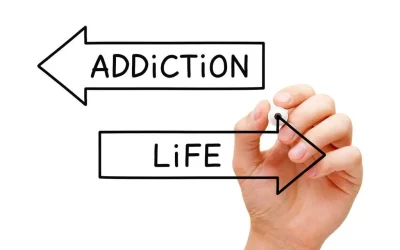Nevertheless, unless their illness is far advanced, alcoholics theoretically should respond just as well as nonalcoholics to medical therapy. Indigent and homeless alcoholics actually have a poorer prognosis than others with TB, however. The primary reason is not a worse response to medications but a relative 6 ways to lower high blood pressure without using medication lack of cooperation in taking them. The same disorganized life circumstances that delay treatment seeking also impede taking regular doses of medication. In addition, the treatments for TB involve drugs that are potentially toxic to the liver and the nervous system, and alcohol enhances their toxicity.
- The negative effects of ethanol lead to alcoholic cirrhosis, where healthy liver tissue is replaced by scar tissue.
- This same treatment also inhibited the in vitro production of IL-6 and IL-12 by peritoneal macrophages harvested 2 hours following injection of LPS (Pruett, Fan et al. 2005).
- The immune response, therefore, would be one of the main channels through which the gut-brain axis establishes communication [108].
- Quitting alcohol is incredibly challenging, but absolutely critical if you want to preserve your health.
Effects on Oxygen-Radical Production
Acute and chronic alcohol exposure can interfere with various aspects of the adaptive immune response, including the antigen presentation required to activate T- and B-cells, the activity of CD4+ and CD8+ T-cells, and the activity of B-cells. The first line of host defense involves both structural (i.e., epithelial) cells and immune cells (i.e., macrophages and dendritic cells) at mucosal surfaces. The epithelial cells function as a physical barrier as well as regulators of the innate and adaptive immunity.
Alcohol and Structural Host Defense Mechanisms
The adaptive immune system can be subdivided into cell-mediated immunity, carried out by T cells, and humoral immunity, carried out by B cells. T cells expressing the CD4 T cell co-receptor are known as T helper cells and play a critical role in the activation and maturation of monocytes, cytotoxic T cells and B cells. T cells expressing the CD8 T cell co-receptor are known as cytotoxic T cells and eliminate host cells infected with intracellular pathogens as well as tumor cells.
The Adaptive Immune Response
Considering the pivotal role of TNF-α in the defense against microorganisms, impaired inflammatory cytokine production after acute alcohol exposure significantly compromises the body’s defense system. Alcoholics are considered “immuno-compromised hosts” because the incidence and severity of infections are increased in these patients. Infections with pathogens that reside within the host’s cells and cause diseases such as pneumonia or tuberculosis are especially prevalent.
The innate immune response to a pathogen is followed by an adaptive immune response that is activated only after the body is exposed to the pathogen for the first time and which is specific to that one pathogen. For instance, IL-1 induces HPA axis activation and glucocorticoid release that suppresses the immune system (Sapolsky, Rivier et al. 1987). Cytokines are also proposed to cross the blood-brain barrier and produce sickness behavior (Watkins, Maier et al. 1995), which is comorbid with AUD (Dantzer, Bluthe et al. 1998). Ethanol administration (4g/kg) alcohol addiction articles in male rats increased IL-6 but decreased TNF-α expression in PVN, an effect that was blunted or reversed after long-term ethanol self-administration (Doremus-Fitzwater, Buck et al. 2014). Cytokines can also modulate important behavioral functions including learning and memory (Hao, Jing et al. 2014) possibly due to their role in neuroplasticity (Sheridan, Wdowicz et al. 2014). Many gaps remain in our understanding of the stress response, its physiological basis in the HPA, axis and its role in modulating the effects of ethanol on host immunity.
Eventually, you can develop permanent and irreversible scarring in your liver, which is called cirrhosis. According to the Cleveland Clinic, once you take a sip of alcohol, your body prioritizes breaking down alcohol over several other bodily functions. The body doesn’t have a way to store alcohol like it does with carbohydrates and fats, so it has to immediately send it to the liver, where it’s metabolized.
Heavy drinking triggers a cascade of inflammation that damages healthy tissue over time. Alcohol abuse represents a risk factor for liver diseases, such as alcoholic steatohepatitis and cirrhosis [37] in such a way that approximately 25% of heavy drinkers develop clinically alcoholic liver disease (ALD). 2The alcohol concentrations used in these experiments were 10 to 100 millimoles per liter (mmol/L). Concentrations of 25 mmol/L approximate blood alcohol levels of 0.1 percent, the legal limit for driving in many States.
Reduced cell-mediated immunity was proposed as a potential explanation for the high incidence of head and neck cancer observed in alcoholic patients (Lundy et al. 1975). However, these studies are difficult to interpret, because several factors affect antitumor immunity in human alcoholics, including malnutrition, vitamin deficiencies, and liver cirrhosis. The impact of alcohol on NK cells, which are the first responders against tumor-forming cells, has been investigated in mouse models. Those studies showed decreased cytolytic activity of NK cells in C57BL/6 mice consuming 20 percent ethanol for 4 weeks; however, no differences existed in the metastasis of B16-BL6 melanoma cells in alcohol-consuming and control animals (Meadows et al. 1993).
For example, some T cells produce cytokines that stimulate their own activity or that of other T cells. Other subgroups of T cells secrete cytokines that inhibit the cell-mediated and humoral immunity and thus prevent an excessive reaction of the immune system. Finally, some T-cell–derived cytokines enhance B-cell multiplication, differentiation, and antibody production.
Just having anxious thoughts can weaken your immune response in as little as 30 minutes. Constant stress takes an even bigger toll and makes it harder to fend off the flu, herpes, shingles, and other viruses. Talk to your doctor if you can’t shake your worry or if it gets in the way of normal life. And now, researchers say the odd glass of wine with dinner may actually benefit our health – as new research suggests it can boost the immune system and improve its response to vaccination. To put the brakes on uncontrolled fire in your body, the immune system releases other chemicals and prevents damage—while still allowing helpful inflammation to neutralize the threat. Adaptive immunity remembers previous offenders so it can quickly round them up if they sneak back in.
This causes the increase in pro-inflammatory components that can lead to alcohol liver disease or increased states of neuroinflammation. Researchers and clinicians are gaining further insight into the complex mechanisms and consequences of immunosuppression in chronic alcoholics. It is important, however, to dissect the effects caused by the body’s chronic exposure to alcohol itself and the effects of other alcohol-related immunomodulatory conditions, such as malnutrition, vitamin deficiencies, and alcoholic liver disease. Moreover, a better understanding of the specific immune system alterations caused by chronic alcohol consumption is necessary for designing effective therapeutic approaches to ameliorating immunosuppression in chronic alcoholics. One possible explanation for these conflicting findings is that alcohol interferes only with some aspects of B-cell functioning.
Thus, studies in C57BL/6 mice demonstrated that chronic ethanol consumption (20 percent ethanol in water for up to 6 months) decreased the frequency of naïve T cells and increased the percentage of memory T cells (Song et al. 2002; Zhang and Meadows 2005). This loss of naïve T cells could result from decreased T-cell production in the thymus; increased cell death (i.e., apoptosis) of naïve T cells; or increased homeostatic proliferation. Additional analyses detected evidence that T-cell proliferation in the spleen was increased in alcohol-consuming mice (Zhang and Meadows 2005).
In addition, animal studies have indicated that acute alcohol intoxication can decrease complement activation in response to tissue injury resulting from disruptions in blood supply (i.e., ischemic injury). In contrast, chronic alcohol intake can activate the complement response (Roychowdhury et al. 2009), both by inducing the biochemical pathways that lead to activation of the complement the irrational mind of addicts and alcoholics cascade and by suppressing processes to terminate or regulate the cascade (Bykov et al. 2007). The induced innate humoral response plays a critical role in clearing or containing infection while an adaptive response develops. It is characterized by the release of mediators of inflammatory reactions, such as cytokines and chemokines, as well as activation of the complement cascade.
Monocytes express Toll-like receptor (TLR) 4, the PRR that is often responsible for recognizing LPS on the surface of Gram-negative bacteria. After binding to LPS, monocytes are activated and mature into macrophages that travel to the site of infection to secrete important cytokines for the inflammatory response. Within the GI tract, alcohol exposure can also alter the number and abundance of microorganisms present within the microbiome, all of which play an important role in normal GI function. In addition to its adverse effects on GI functioning, the impact of alcohol on the GI microbiome can also alter the maturation and functions of the immune system.
For example, alcohol alters the numbers and relative abundances of microbes in the gut microbiome (see the article by Engen and colleagues), an extensive community of microorganisms in the intestine that aid in normal gut function. Alcohol disrupts communication between these organisms and the intestinal immune system. Alcohol consumption also damages epithelial cells, T cells, and neutrophils in the GI system, disrupting gut barrier function and facilitating leakage of microbes into the circulation (see the article by Hammer and colleagues). Alcohol-mediated effects on CD8+ T-cell function also have been linked to impaired immunity in the lung in response to influenza infection (Meyerholz et al. 2008). Whether the increased viral load measured in SIV-infected chronic alcohol-fed macaques can be attributed to diminished CD8+ T-cell function remains to be established (Bagby et al. 2006; Kumar et al. 2005).











